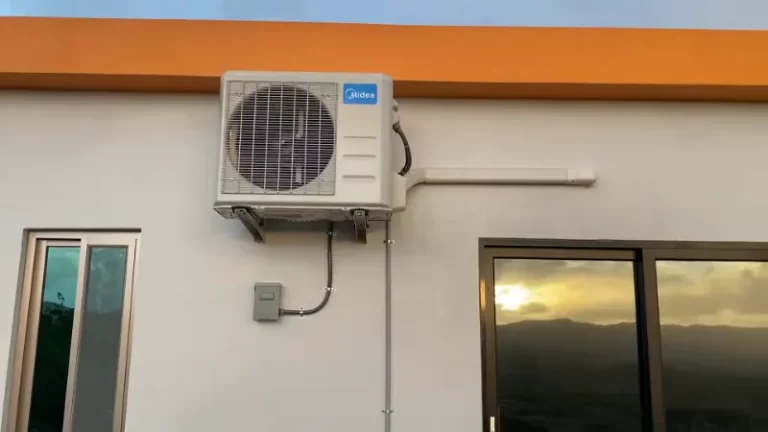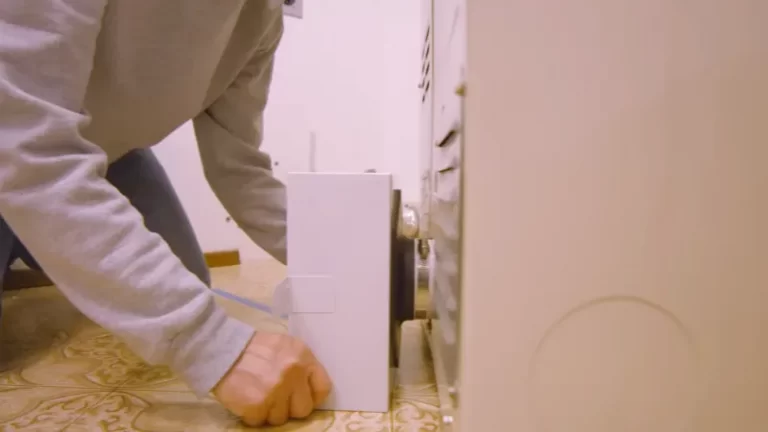Stuck Radiator Knob? Easy Fix for Your Thermostat
There’s nothing more frustrating than a radiator that’s either blasting heat uncontrollably or giving you the cold shoulder. You reach down to adjust the temperature, and the radiator knob is stuck solid. It’s a common household problem that can leave you feeling helpless.
But don’t call a plumber just yet. In most cases, you can solve this issue yourself with a few simple tools and a little bit of patience. This guide will walk you through everything you need to know.
You'll Learn About
Why Radiator Knobs Get Stuck: The Common Culprits
Understanding why your radiator knob is stuck is the first step toward fixing it. Several factors can cause a valve to seize up, from internal buildup to simple disuse.
The Problem of Limescale and Debris
Over time, the water flowing through your heating system can deposit minerals, rust, and other debris inside the valve. This buildup, often called limescale, can effectively cement the moving parts of the valve in place, making the knob impossible to turn.
This is especially common in areas with hard water. The constant flow of mineral-rich water creates a stubborn internal scale that restricts movement.
Corrosion and Rust Over Time
Radiator valves are typically made of metal, and where there’s metal and water, there’s always a risk of corrosion. A small, undetected leak or even just humidity can cause rust to form on the valve stem, leading it to seize.
This process happens slowly over many years. You might not notice a problem until the day you try to adjust the heat and find the knob completely frozen.
The Infamous Stuck TRV Pin
Many modern radiators are fitted with Thermostatic Radiator Valves (TRVs). These have a small internal pin that moves up and down to control water flow based on the room’s temperature. This pin is a common failure point.
If the valve is left in one position for a long time (especially over the summer), this tiny pin can get stuck in the “closed” position. When this happens, the knob might turn, but the radiator won’t heat up because the valve itself is jammed shut.
Essential Tools and Safety Before You Begin
Before you attempt any repairs, it’s crucial to gather the right tools and take some basic safety precautions. Working on a hot radiator can cause serious burns.
First, turn off your central heating system and allow the radiator to cool down completely. You’ll need a few basic items: an adjustable wrench, a can of penetrating oil (like WD-40), a thick cloth or towel, and a small hammer or rubber mallet.
Step-by-Step Guide: How to Free Your Stuck Radiator Knob
With your tools ready and the radiator cool, it’s time to get to work. Follow these steps in order, starting with the gentlest method first. Most stuck knobs can be freed without too much force.
Step 1: Gentle but Firm Persuasion
Your first move should always be the simplest. Wrap a cloth around the radiator knob to get a better grip and protect your hand. Try to turn the knob back and forth with firm, steady pressure.
Sometimes, a little extra torque is all that’s needed to break it free. Do not apply excessive force, as you could break the plastic knob or damage the internal valve mechanism.
Step 2: Apply Penetrating Oil
If gentle force doesn’t work, penetrating oil is your next best friend. Spray a small amount of oil onto the valve stem, right where the knob meets the main valve body. The goal is to get the lubricant down into the internal mechanism.
Let the oil sit for at least 10-15 minutes to work its way into the threads and dissolve some of the rust or limescale. After it has soaked in, try turning the knob again.
Step 3: Use a Wrench for Leverage (With Caution)
This step requires care, as too much force can cause serious damage. If you’re dealing with a traditional wheel-head or lockshield valve, you can use an adjustable wrench for more leverage. Grip the valve body (the main metal part) with one hand or another wrench to hold it steady.
Place your adjustable wrench on the spindle nut, just below the knob, and try to turn it gently. It’s crucial to understand your home’s limits; applying too much pressure here is a bad idea, much like not knowing how much weight can a door frame hold can lead to structural problems. A little movement is all you need to break the initial seizure.

Step 4: The Tapping Technique
Another effective method is to use gentle vibrations to loosen the stuck parts. Using a small hammer or rubber mallet, lightly tap the metal body of the valve all around. Do not hit the plastic knob or the pipes.
These vibrations can help break up the internal corrosion and scale that’s causing the jam. After a few taps, try turning the knob again. Often, this is enough to do the trick.
Special Case: Fixing a Stuck Thermostatic Radiator Valve (TRV)
If you have a TRV, the problem is likely the internal pin, not the knob itself. The knob on a TRV is usually just a temperature selector that you can remove.
How to Free a Stuck TRV Pin
First, unscrew the large plastic TRV head from the metal valve body. This usually involves a simple screw or a rotating collar. Once the head is off, you’ll see a small metal pin, about the size of a matchstick head, sticking out of the valve.
If the radiator was cold, this pin is likely stuck down. Using the end of a spoon or a pair of pliers, gently grip the pin and try to pull it up. It should move up and down freely with a bit of springy resistance. If it’s stuck, tap the side of the valve body and gently work the pin up and down until it moves smoothly.
Troubleshooting Quick Guide
Here is a quick reference table to help you diagnose and solve your radiator knob issue. It simplifies the common problems and directs you to the most effective solution.
| Symptom | Likely Cause | Recommended Solution |
|---|---|---|
| Knob won’t turn at all. | Internal limescale or rust buildup. | Apply penetrating oil and use gentle force with a wrench. |
| TRV knob turns, but radiator stays cold. | The internal TRV pin is stuck down. | Remove the TRV head and free the pin by tapping and pulling gently. |
| Knob is loose or spinning freely. | The knob is broken or disconnected from the valve stem. | Tighten the screw on the knob or replace the knob head. |
| Valve is leaking after being turned. | The internal packing gland is worn out. | Try tightening the gland nut; if leaking persists, call a professional plumber. |
Preventative Maintenance: Stop It from Happening Again
The best way to deal with a stuck radiator knob is to prevent it from happening in the first place. A little seasonal maintenance can save you a lot of hassle down the road.
At least twice a year, especially before and after winter, turn each radiator valve in your home all the way on and then all the way off. This simple action keeps the internal parts moving and prevents them from seizing. It’s a key part of seasonal home care, just like performing a sprinkler blowout before the first freeze.
When You Should Call a Professional
While most stuck knobs are a simple DIY fix, there are times when it’s best to call in a professional plumber. If you notice any water leaking from the valve body, stop immediately.
A leak could indicate a cracked valve or a failed seal, and applying more force could cause a serious flood. Additionally, if you’ve tried all the steps above and the valve still won’t budge, it may need to be professionally replaced. It’s frustrating when a simple device doesn’t respond, similar to when you wish you could just figure out an LG washing machine song change but can’t find the setting.
Frequently Asked Questions
Why is my radiator knob stuck?
Radiator knobs, especially on thermostatic valves, often get stuck due to a lack of use. During warmer months, the valve’s internal pin can remain in one position for an extended period, causing it to seize up. This is a common issue that usually occurs after a long summer when the heating has been off.
How can I fix a stuck radiator knob?
First, try turning the valve to its highest setting. If it’s still stuck, you can remove the cap to expose a small metal pin. Gently tapping this pin or wiggling it with pliers can help to free it. Applying a small amount of lubricating spray like WD-40 can also help loosen a stuck pin.
What if the radiator knob is still stuck after trying to free the pin?
If the pin remains stuck after gentle tapping and lubrication, the entire thermostatic radiator valve (TRV) may need to be replaced. Forcing a stuck knob can cause more significant damage, potentially leading to leaks. It is advisable to contact a professional plumber if you are unable to free the valve with simple methods.
How can I prevent my radiator knob from getting stuck again?
To prevent the valve from seizing, it’s a good practice to periodically turn your radiator valves on and off during the months when the heating isn’t in use. At the end of the heating season, it is recommended to open the valve fully before turning the heating system off. This helps to keep the internal pin moving and prevents it from getting stuck in one position.
Is it safe to use force to turn a stuck radiator knob?
You should avoid using excessive force to turn a stuck radiator knob. Forcing the valve could break it, leading to a leak or other damage to your heating system. Gentle persuasion is key; if the knob won’t turn with moderate pressure, it’s better to investigate the underlying issue with the valve’s pin.


